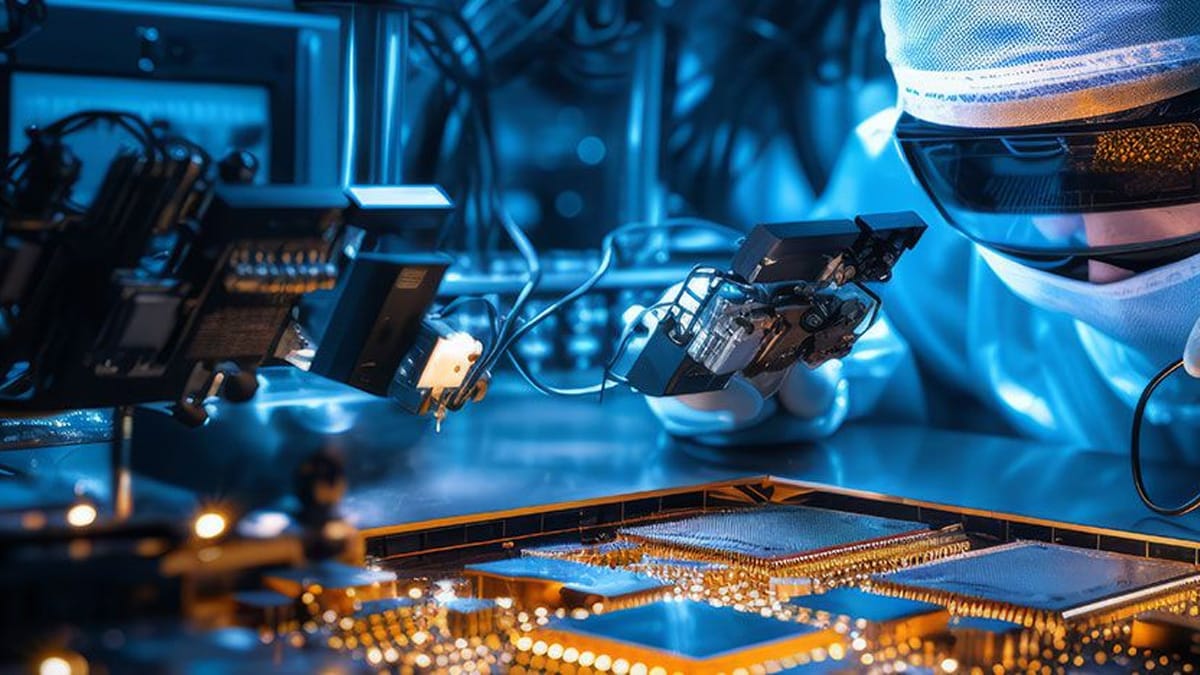
The government launched the Indian Semiconductor Mission (ISM) in 2022 with the aim to catalyse semiconductor manufacturing, packaging, and design capabilities positioning India to become a global hub leveraging foreign investment.
The India Electronic & Semiconductor Association (IESA) report estimates that India’s semiconductor market will be valued at around $64 billion by 2026, a twofold increase from $26.3 billion in 2022. Projection by Outlook pegs India’s semiconductor market on the road to $80.3 billion by 2028.
The government expects Tata and Taiwan’s Powerchip Semiconductor Manufacturing Corporation (PSMC) fab plant and three Assembly, Testing, Marking and Packaging (ATMP)/Outsourced Semiconductor Assembly and Testing (OSAT) plants to attract nearly $18.15 billion in investments and will have a combined capacity to produce 70 million chips per day
Larsen & Toubro Ltd. has announced its plan to invest over $300 million to establish a fabless chip company in India, aiming to design 15 products by 2027. American multinational semiconductor company AMD has inaugurated its global design centre in Bengaluru, as a part of a $400 million investment plan for the next five years in India.
INC42 has identified 19 Indian semiconductor start-ups likely to strengthen the Indian Semiconductor Mission. They include Saankhya Labs, Mindgrove Technologies, Terminus Circuits, Morphing Machines, FermionIC Design, Oakter, Agnit Semiconductors, Incore Semiconductors, SignOff Semiconductors, Cientra, Silizium Circuits, Aura Semiconductor, Vervesemi, Sensemi, and Netrasemi.
To promote Indian startups in the sector the government has announced a Design Linked Incentive (DLI) Scheme. Through this scheme, the government offers them financial incentives and support for infrastructure design. Recently 12 startups were added under the DLI scheme.
The twelve companies and the innovations they are working on are: DV2JS Innovation (image sensor system on chip for automotive applications); Vervesemi Microelectronics (microcontroller integrated circuit for industrial applications); Fermionic Design (beamformer IC for satellite communication); Morphing Machines (RISC-V multi-core accelerators for telecom applications); Calligo Technologies (hardware accelerators for AI); Sensesemi Technologies (wearable SoC for healthcare applications); Saankhya Labs (base station SoC for 5G communication); Aheesa Digital Innovations (networking SoCs for telecom application); Netrasemi (edge-AI SoC for smart vision and IoT applications); Green PMU Semi (energy harvesting power management IC for IoT and sensing applications); WiSig Networks (NarrowBand IoT SoC); and MosChip Technologies (smart energy metre IC).
Internationally, the State Department announced that the US will partner with India’s Semiconductor Mission to explore opportunities for strengthening the global semiconductor supply chain under the ITSI Fund, part of the CHIPS Act of 2022.
The ISM has moved into phase two, focusing on developing a holistic ecosystem for semiconductors. Israel’s Tower Semiconductor in collaboration with Adani Group has proposed a $10 billion joint venture for a semiconductor fab. Earlier this year PM Modi approved India’s first semiconductor fab facility. The $3.21 billion project is a joint venture between Tata and Powerchip Taiwan and is set to produce 48 million chips daily.
Earlier this year, US-based Micron Technology, Inc signed an MoU with the Government of Gujarat that greenlights the establishment of an ATMP facility in Sanand valued at $2.74 billion. In September, India’s Union Cabinet approved the proposal from Kaynes SemiCon to set up a $394.15 million semiconductor unit in Sanand, Gujarat.
India’s Tata Electronics has signed an MoU with Tokyo Electron to purchase equipment and services for its semiconductor facilities in Gujarat and Assam. The partnership will focus on workforce training, R&D, and enhancing semiconductor infrastructure. Tata Electronics is investing $10.84 billion in its Gujarat Fab and $3.21 billion in its Assam assembly and testing unit.
In Noida, Uttar Pradesh, HCL, the Indian IT sector conglomerate together with Taiwanese electronics manufacturing giant Foxconn has been allotted 30 acres of land to set up a semiconductor OSAT unit in India. Foxconn will have 40% equity for $37.2 million in this deal.
Recently, during Prime Minister Narendra Modi’s visit to Singapore, India and Singapore signed four MoUs targeting semiconductor cluster development and the cultivation of talent in semiconductor design and manufacturing.
All the recent developments catalysed by the favourable policy environment are driving growth in this sector. With the government setting its target to become a global semiconductor hub, investments are projected to increase exponentially.

